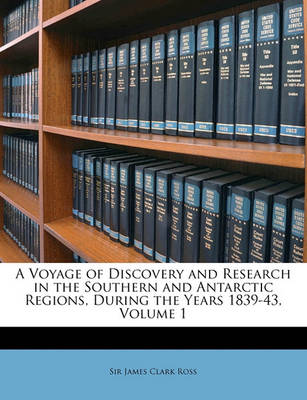Cambridge Library Collection - Polar Exploration
2 total works
James Clark Ross (1800-1862) was an explorer who served in the Royal Navy and made his first Arctic trip in 1818 on an unsuccessful mission to find the North-West Passage between the Atlantic and Pacific Oceans. On the basis of his polar experience, he was appointed to lead further expeditions, and by 1839 he found himself on the opposite side of the world in the Antarctic, with Joseph Dalton Hooker as his on-board naturalist. This two-volume account of the four-year voyage was published in 1847. Ross' findings led him to the conclusion that there was life on the sea floor to at least 730 metres, and the work is an important contribution to the development of oceanography and scientific knowledge about the Antarctic. Volume 2 continues the story of the expedition, which eventually reached 78S, and discovered the deep bay in the southern ocean now called the Ross Sea.
James Clark Ross (1800-1862) was an explorer who served in the Royal Navy and made his first Arctic trip in 1818 on an unsuccessful mission to find the North-West Passage between the Atlantic and Pacific Oceans. On the basis of his polar experience, he was appointed to lead further expeditions, and by 1839 he found himself on the opposite side of the world in the Antarctic, with Joseph Dalton Hooker as his on-board naturalist. This two-volume account of the four-year voyage was published in 1847. Ross' findings led him to the conclusion that there was life on the sea floor to at least 730 metres, and the work is an important contribution to the development of oceanography and scientific knowledge about the Antarctic. Volume 1 covers Ross' journey from England to the Antarctic Circle, detailing the oceanic and climatic observations made along the way.

